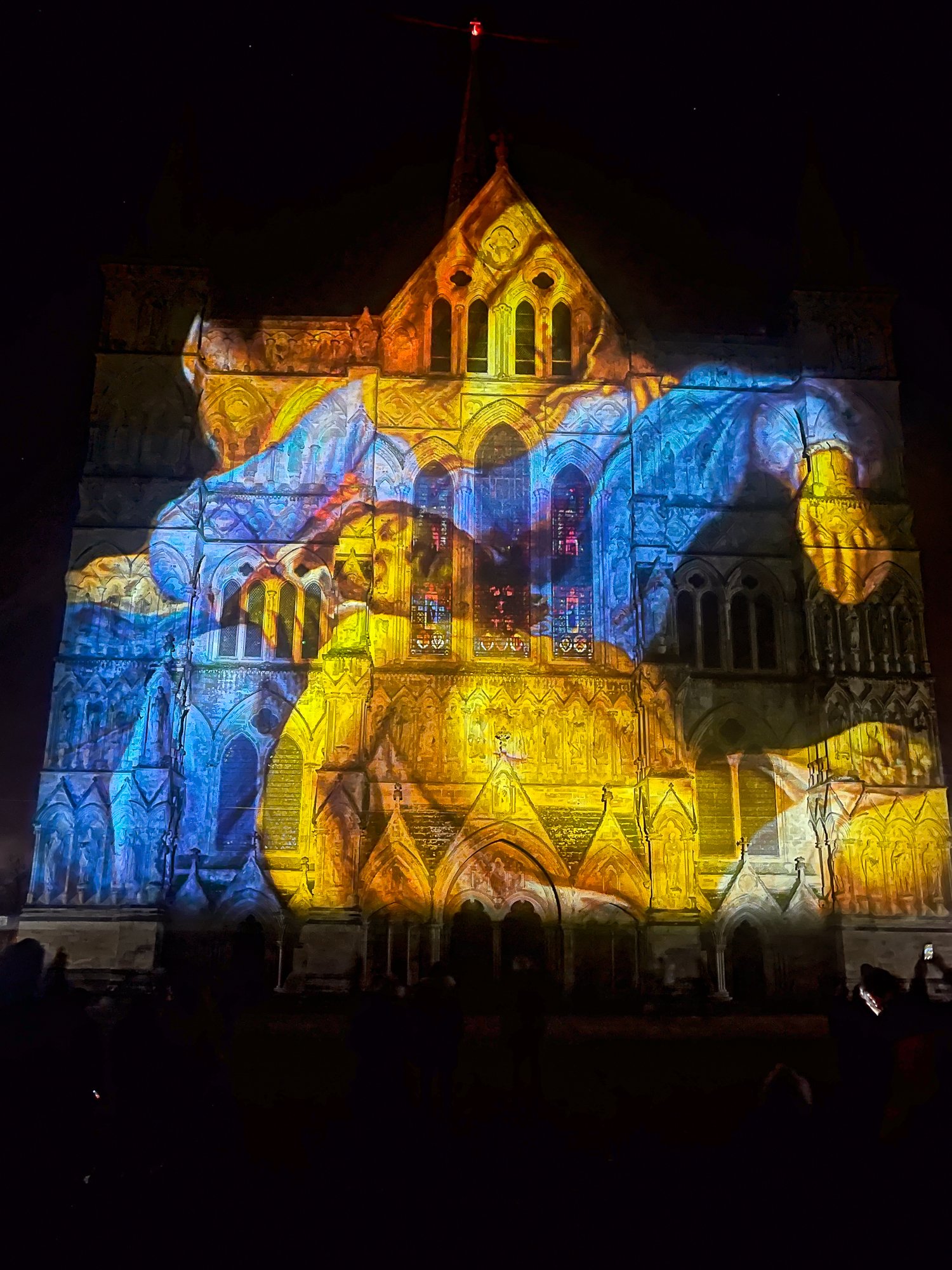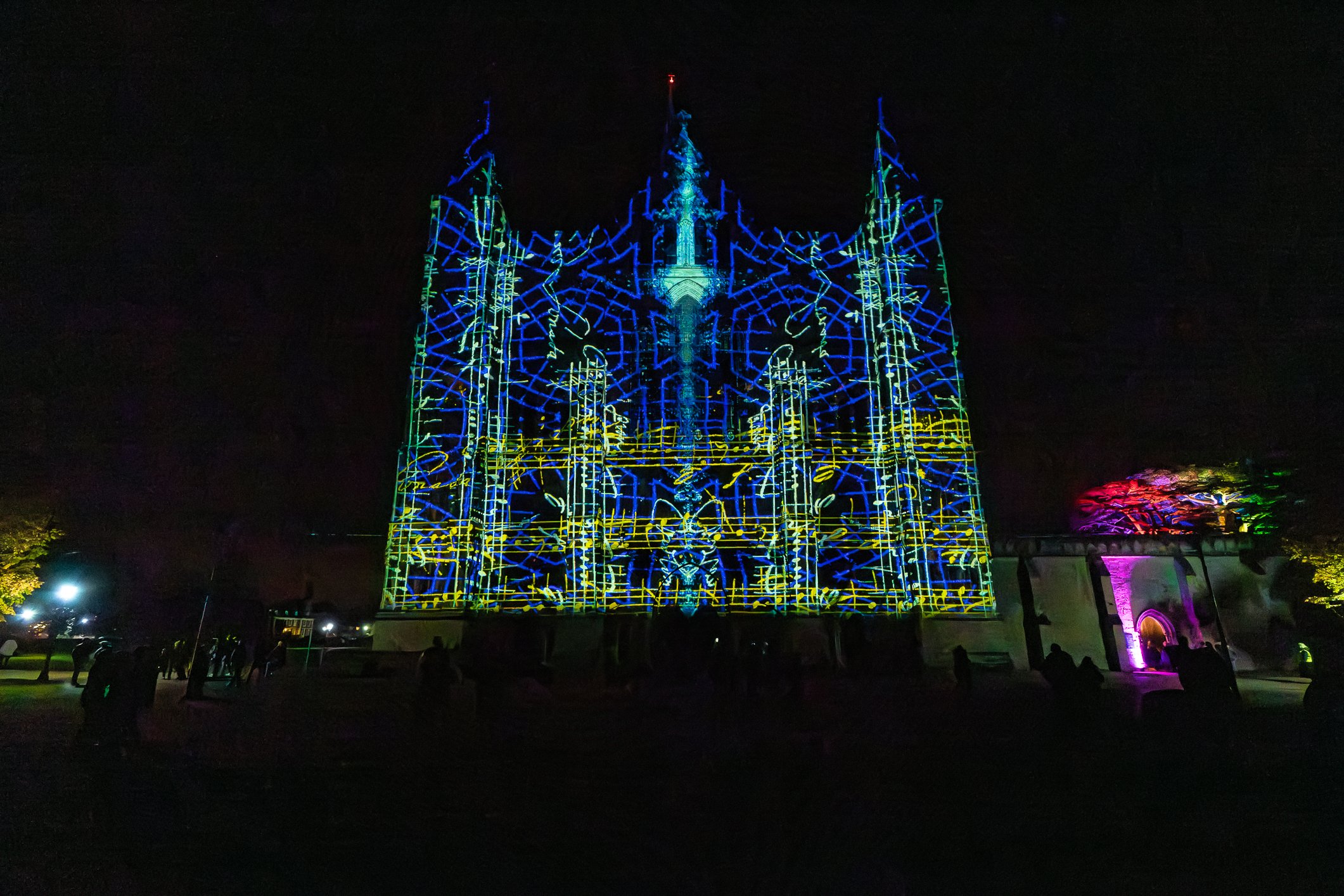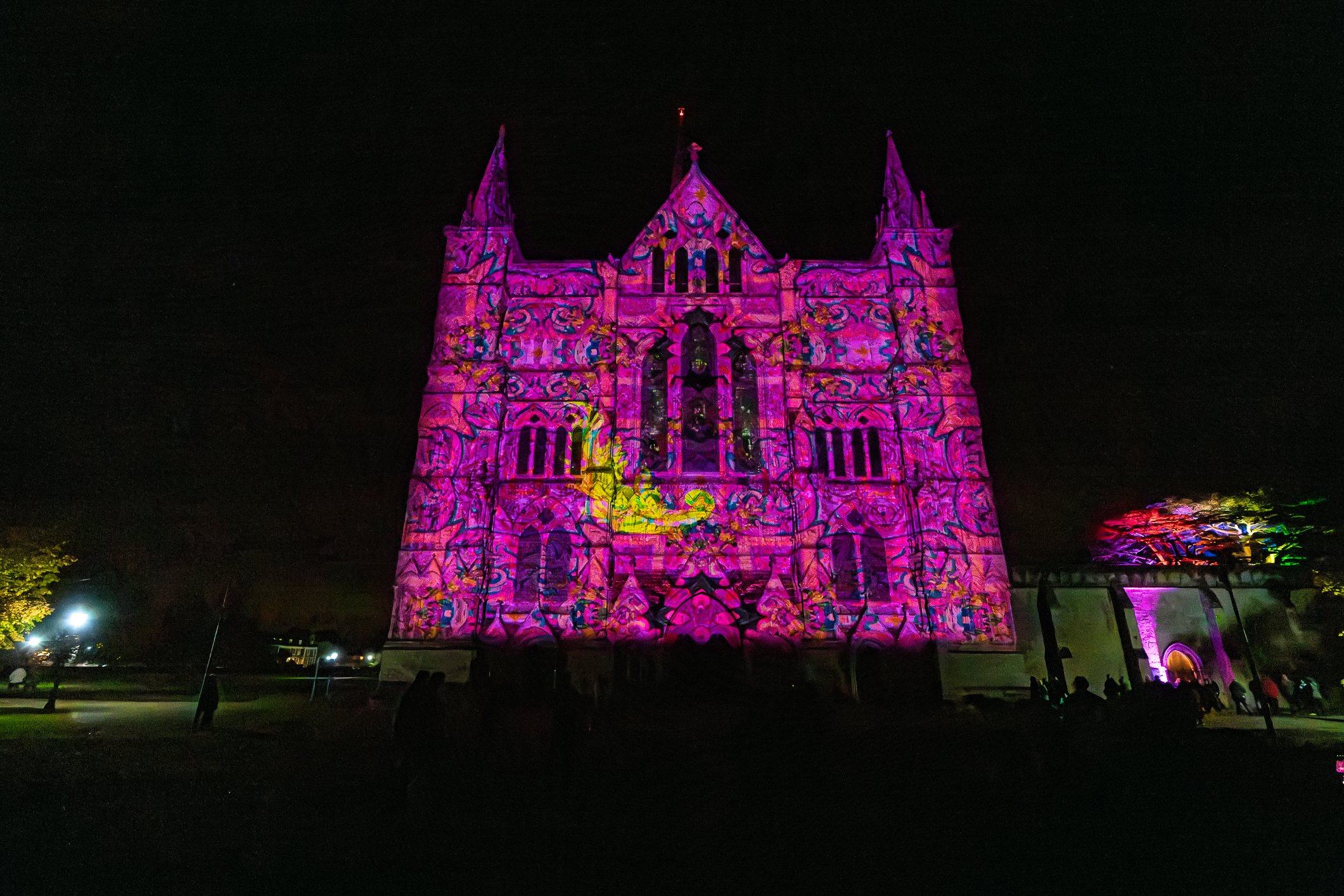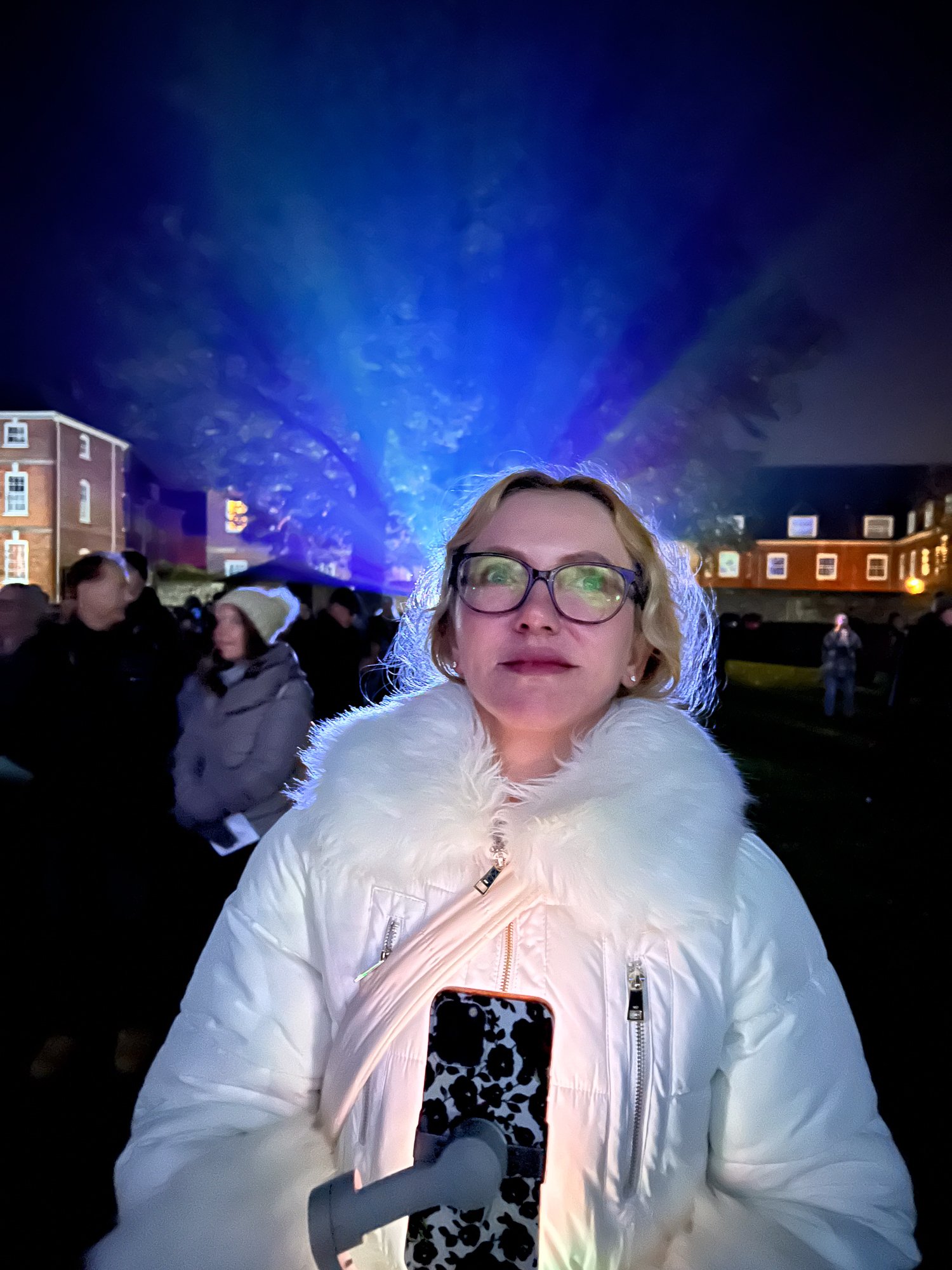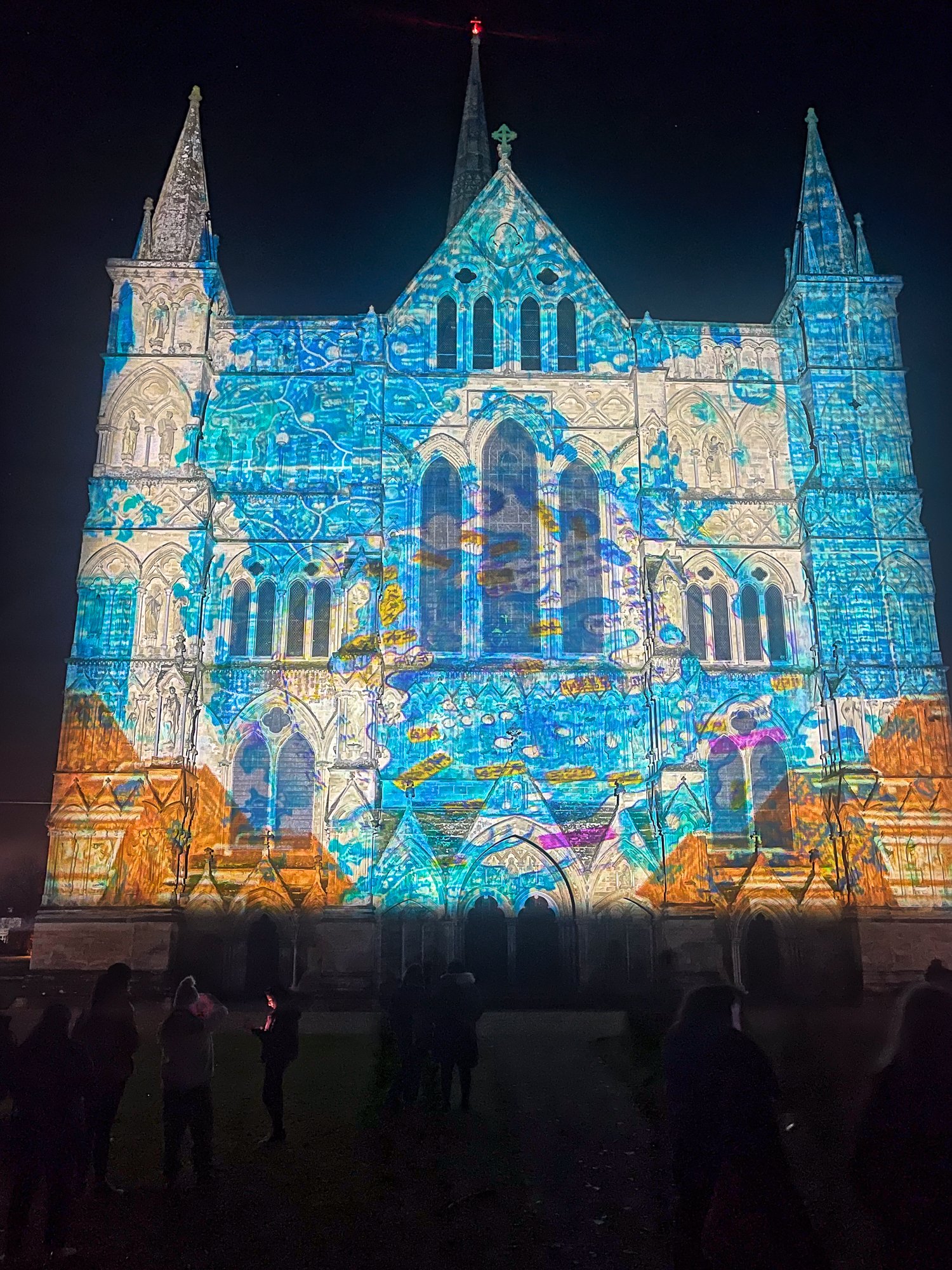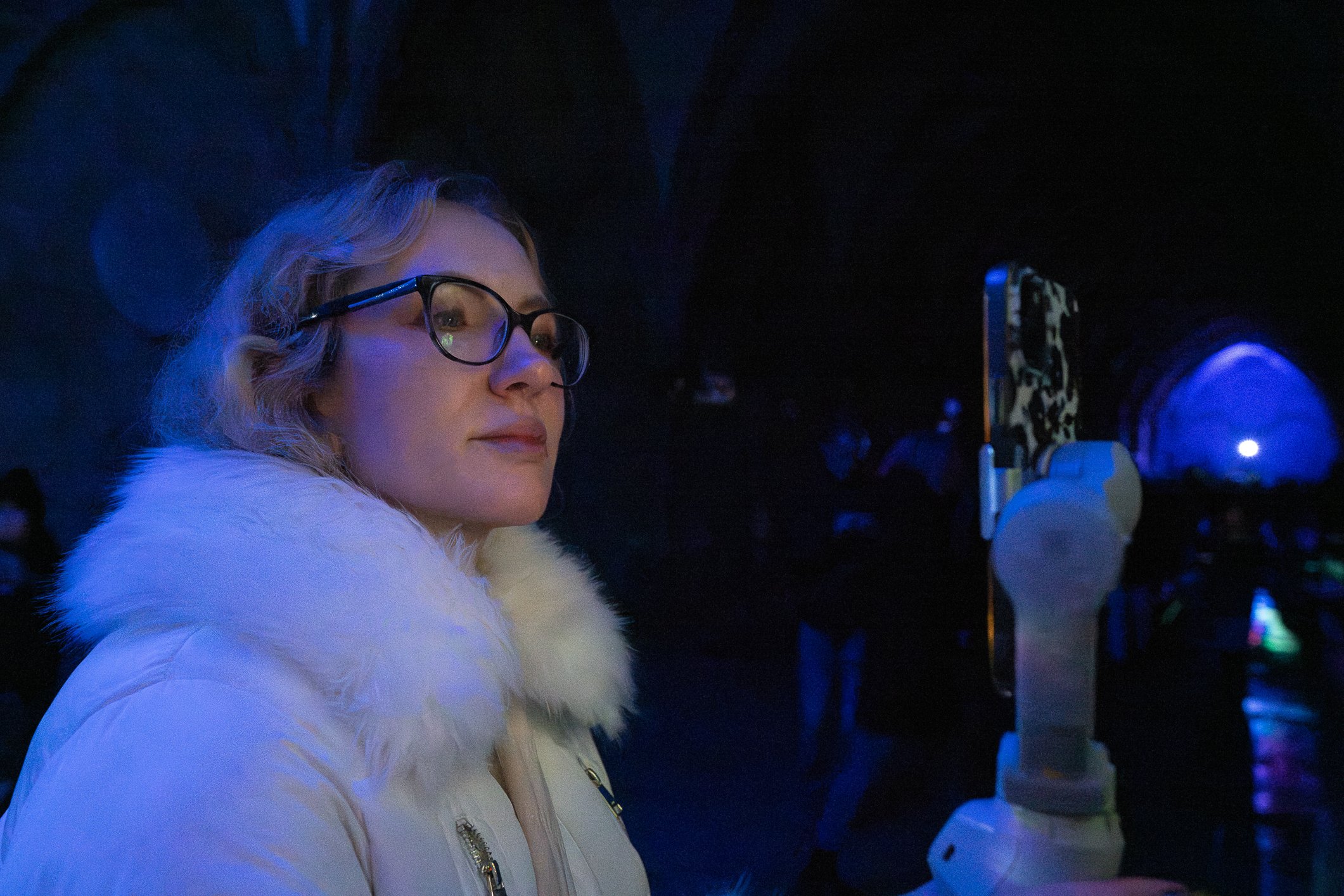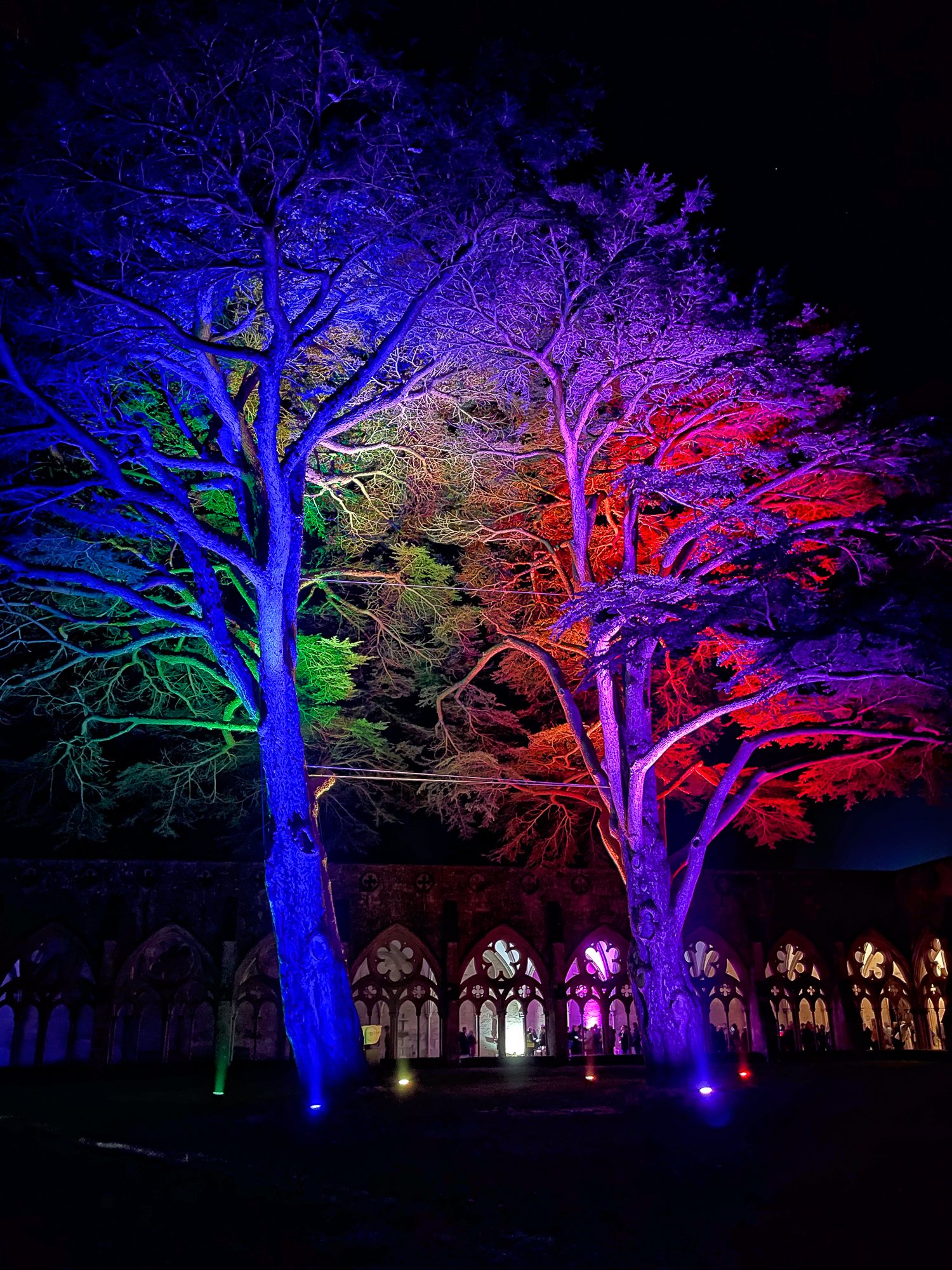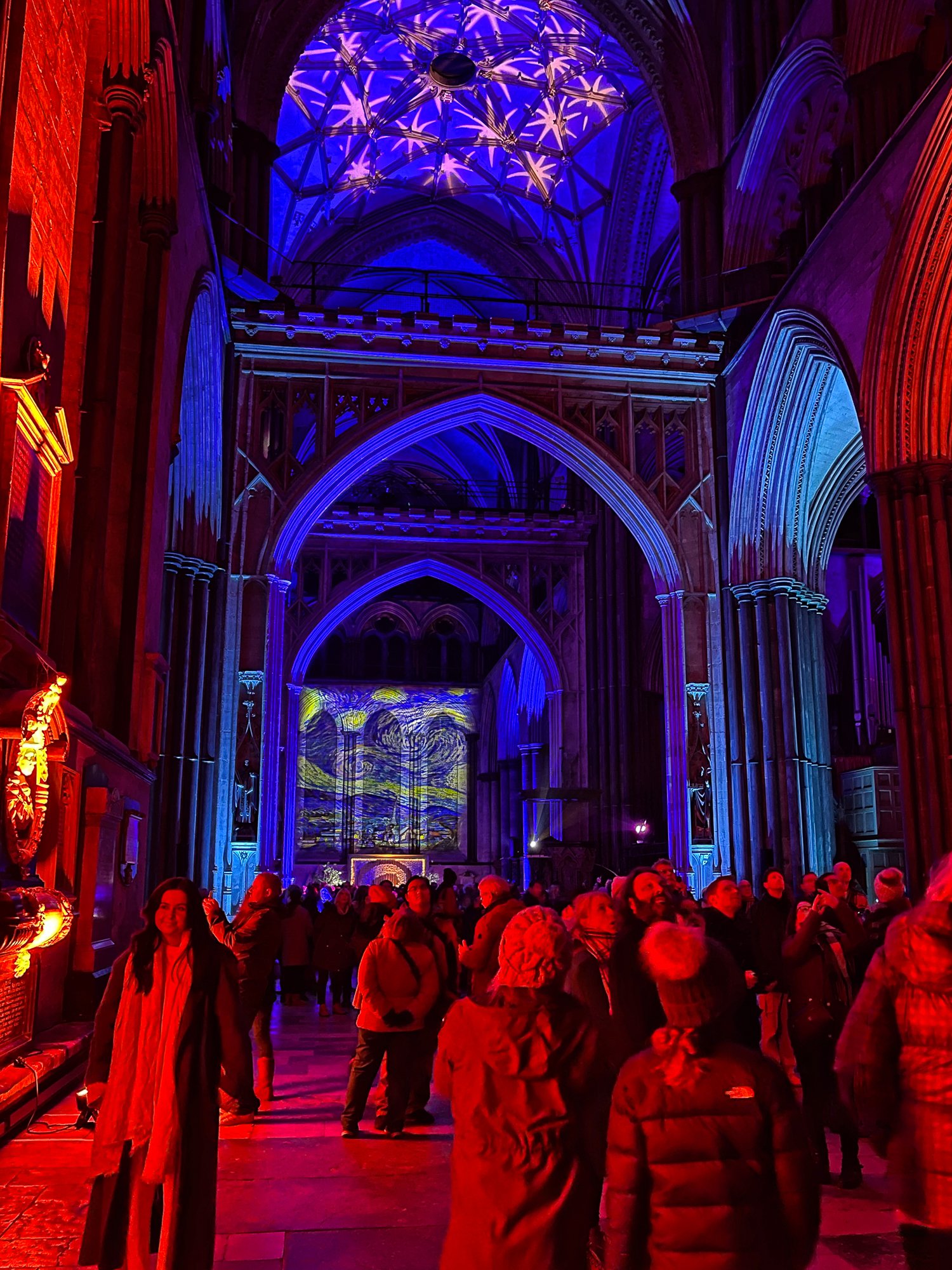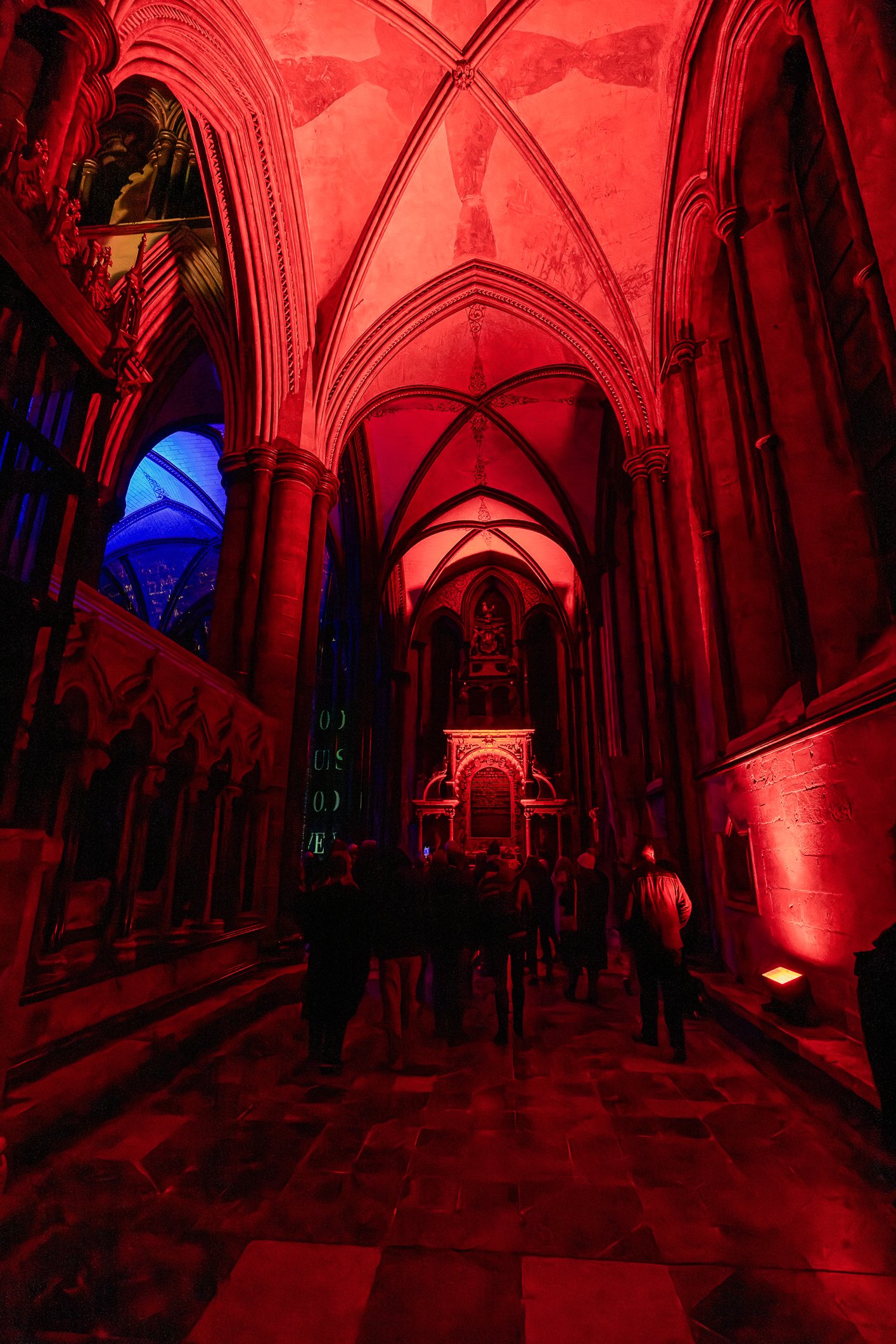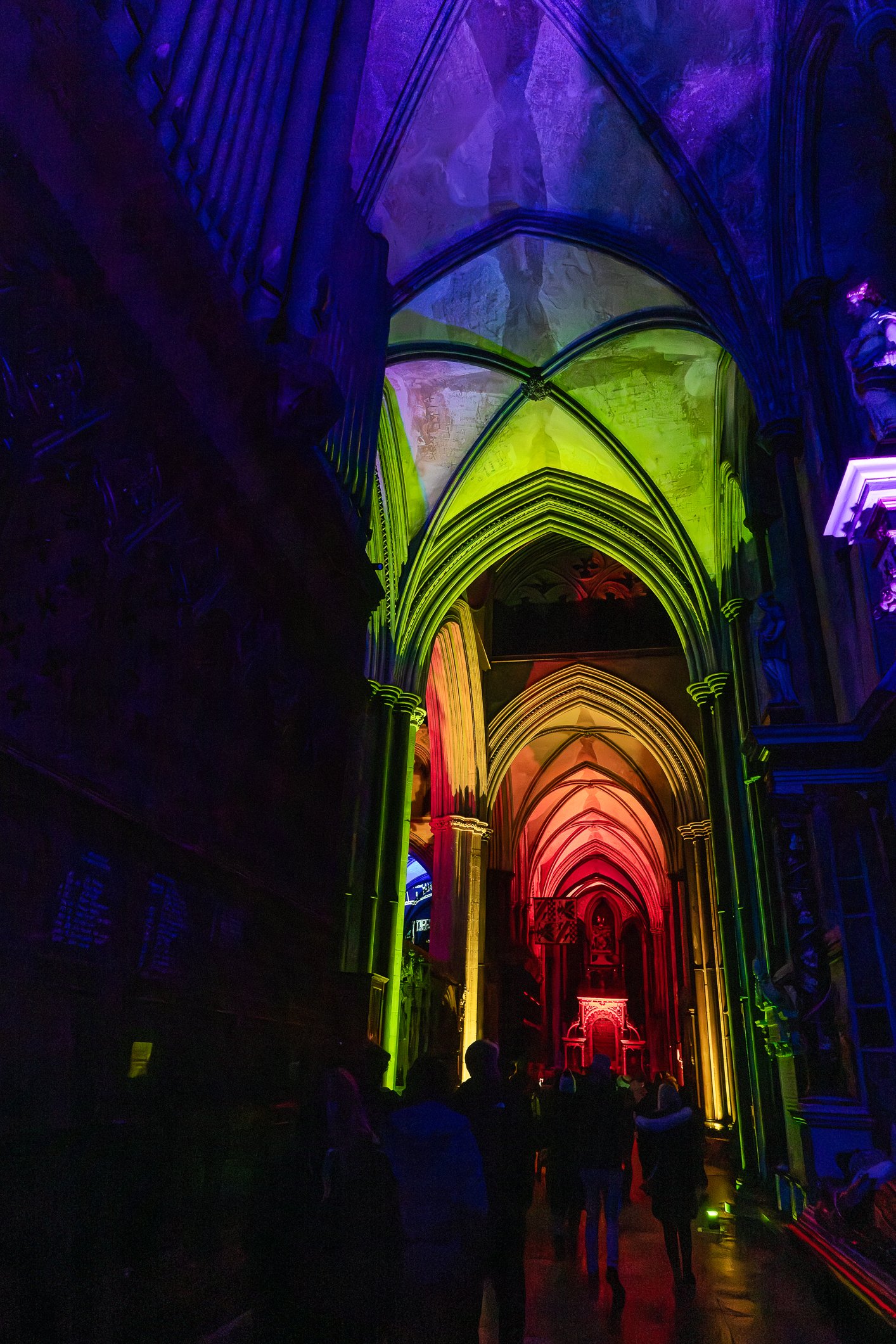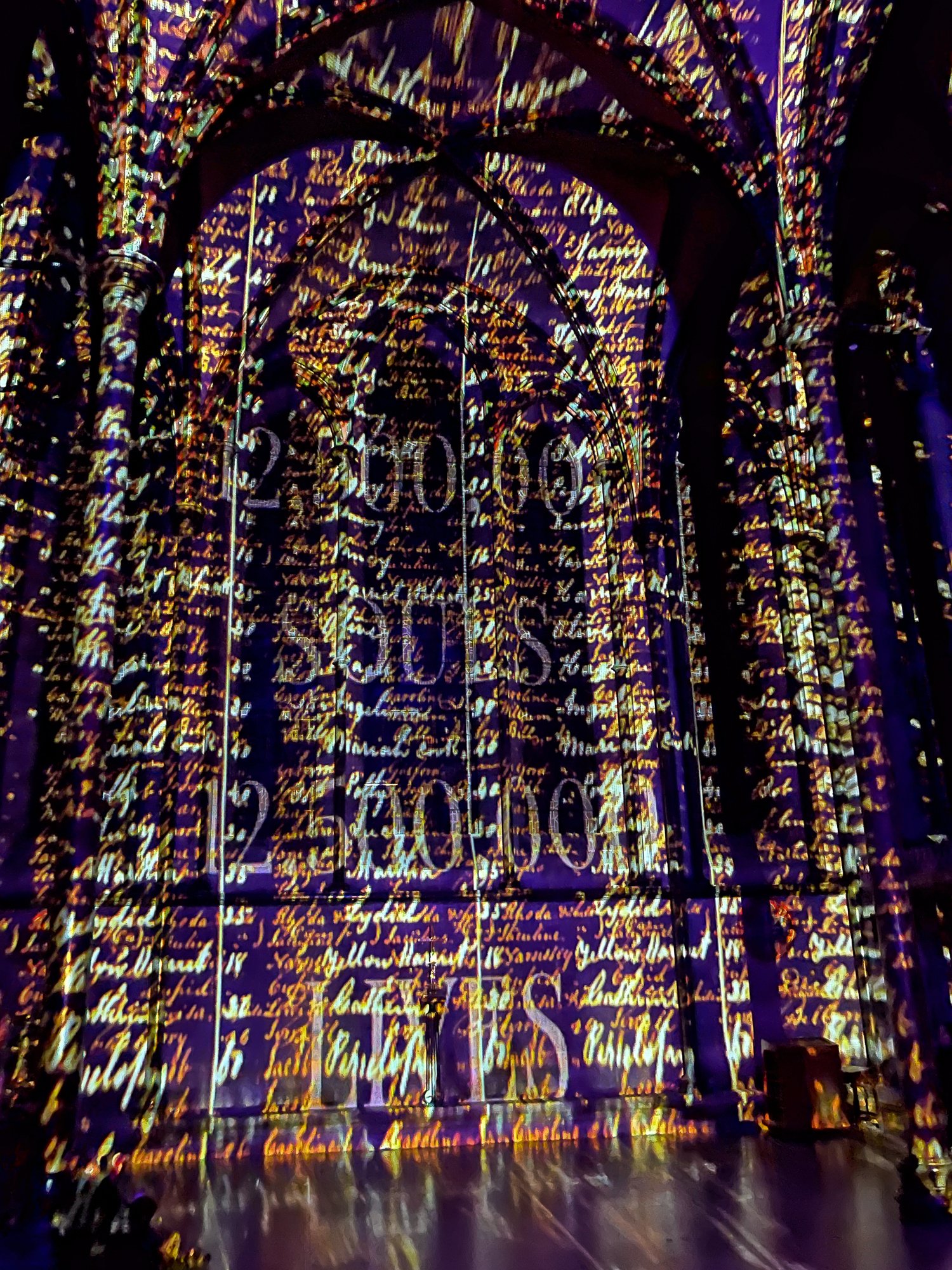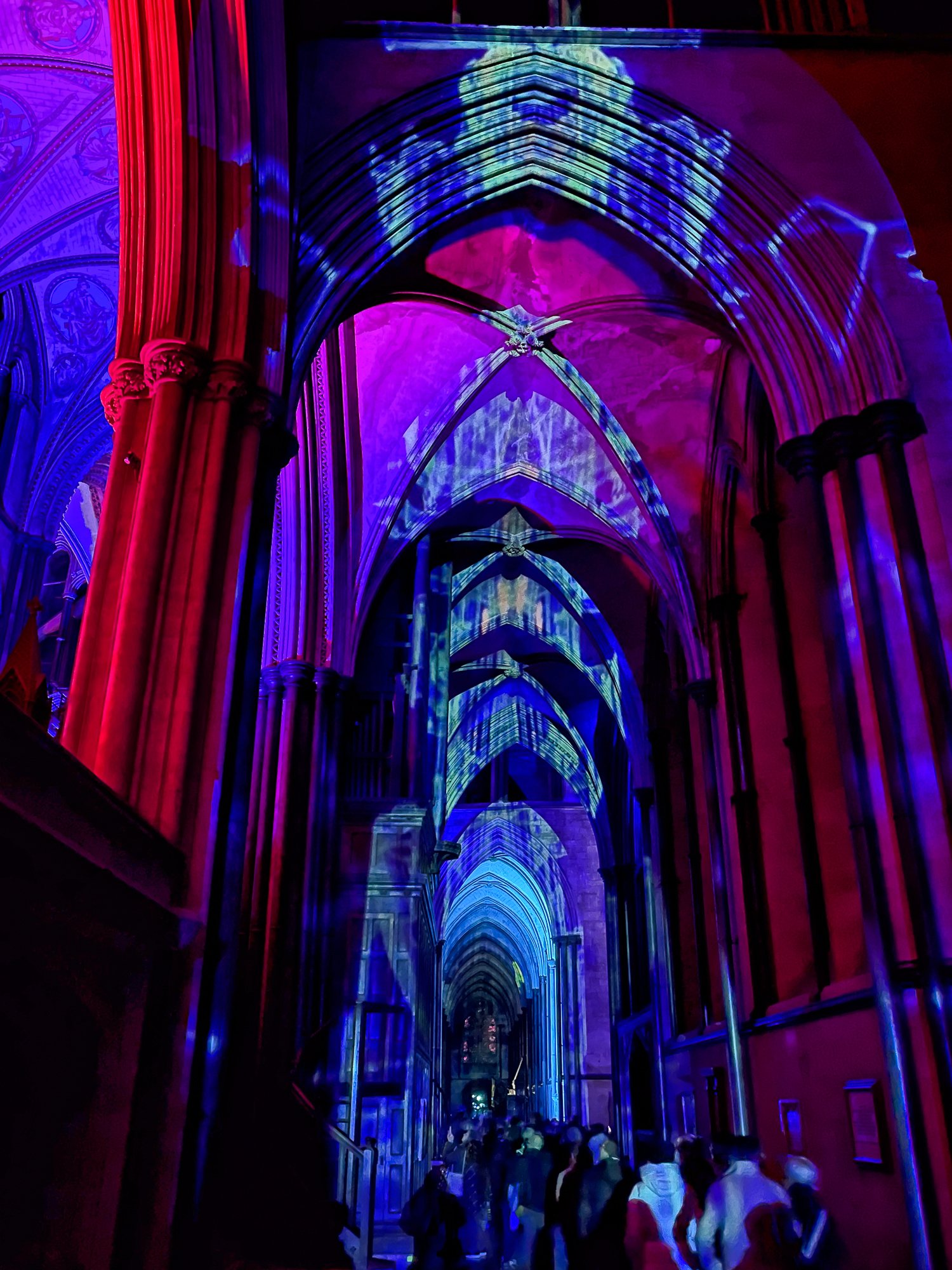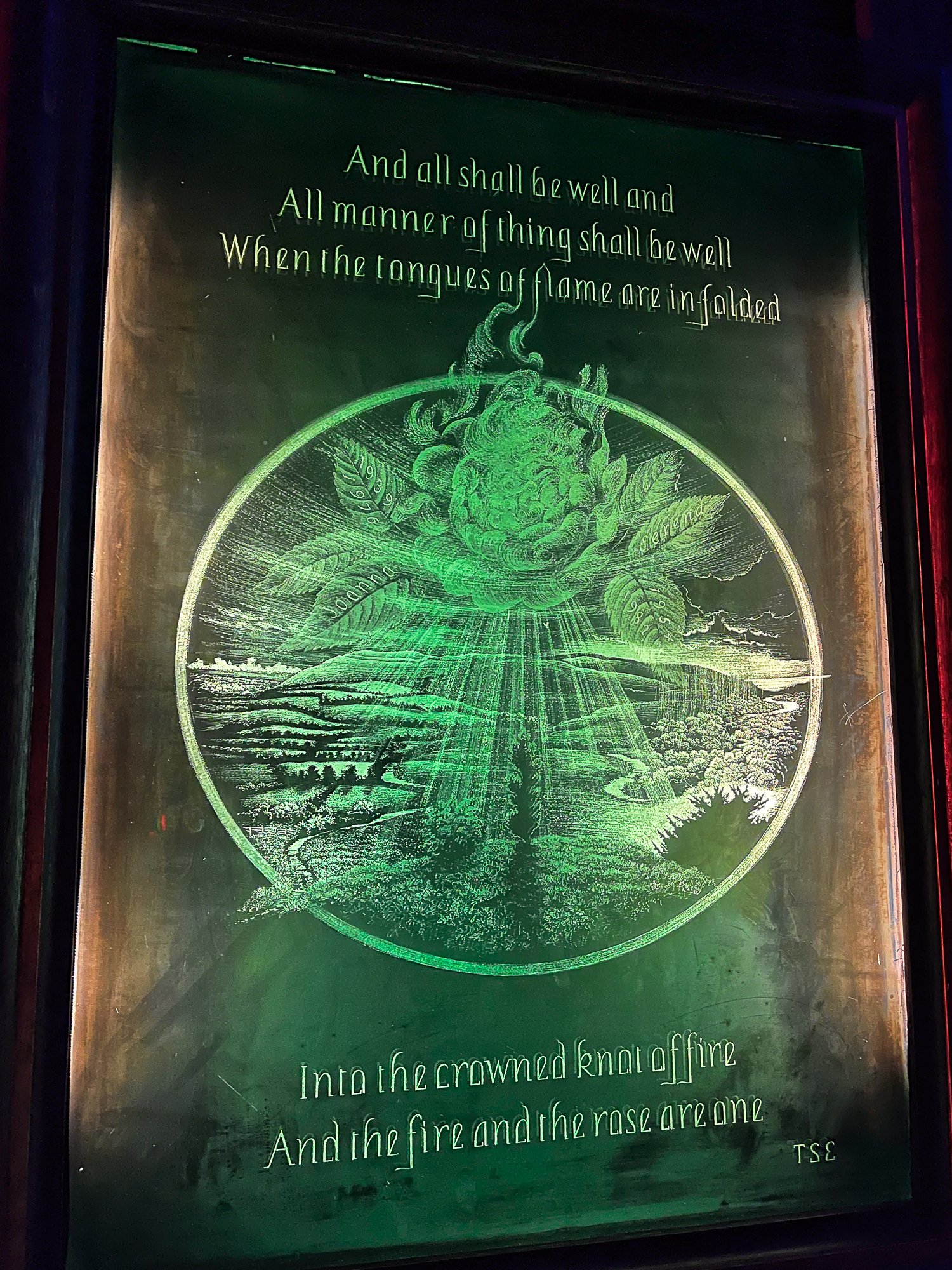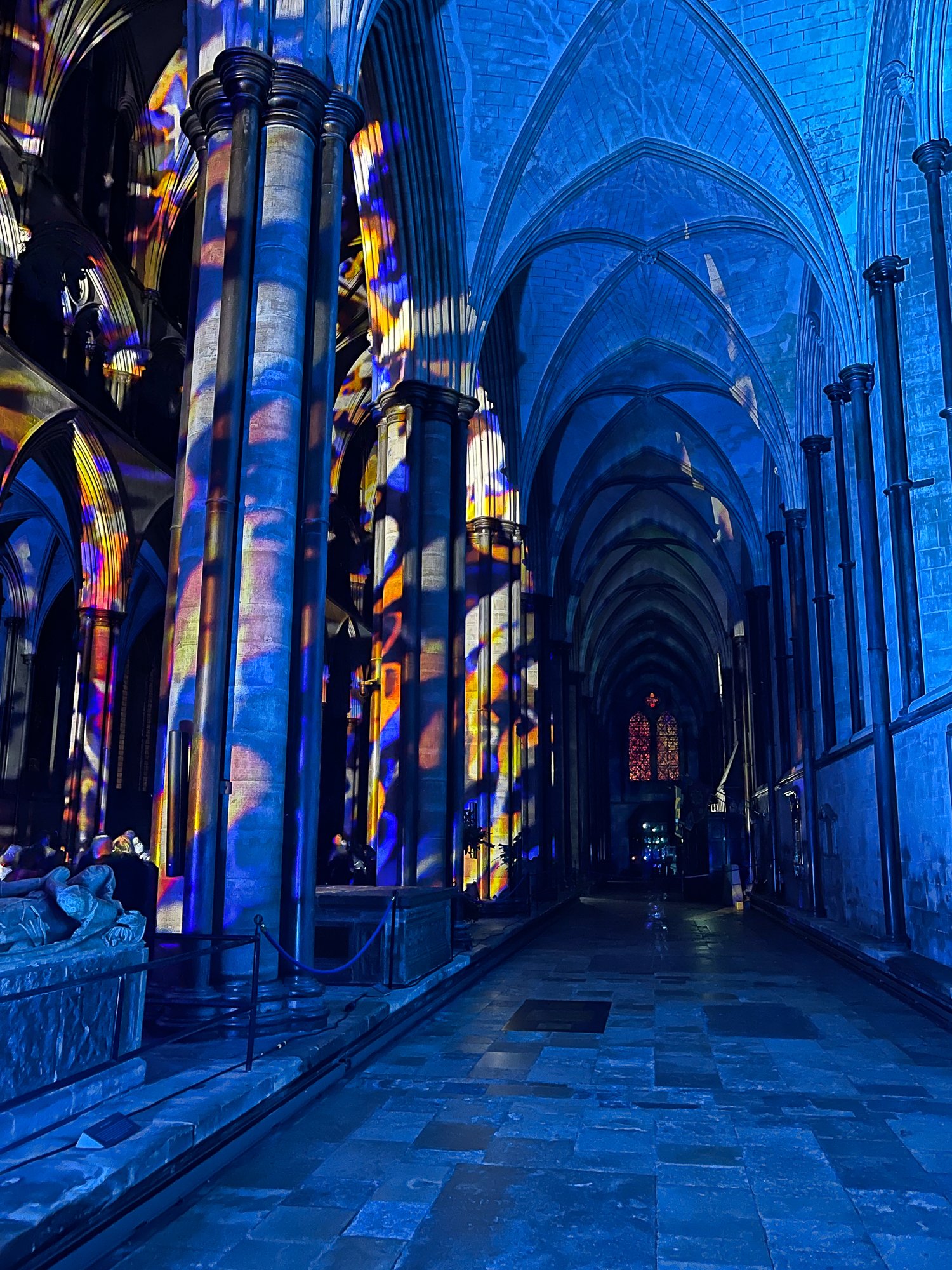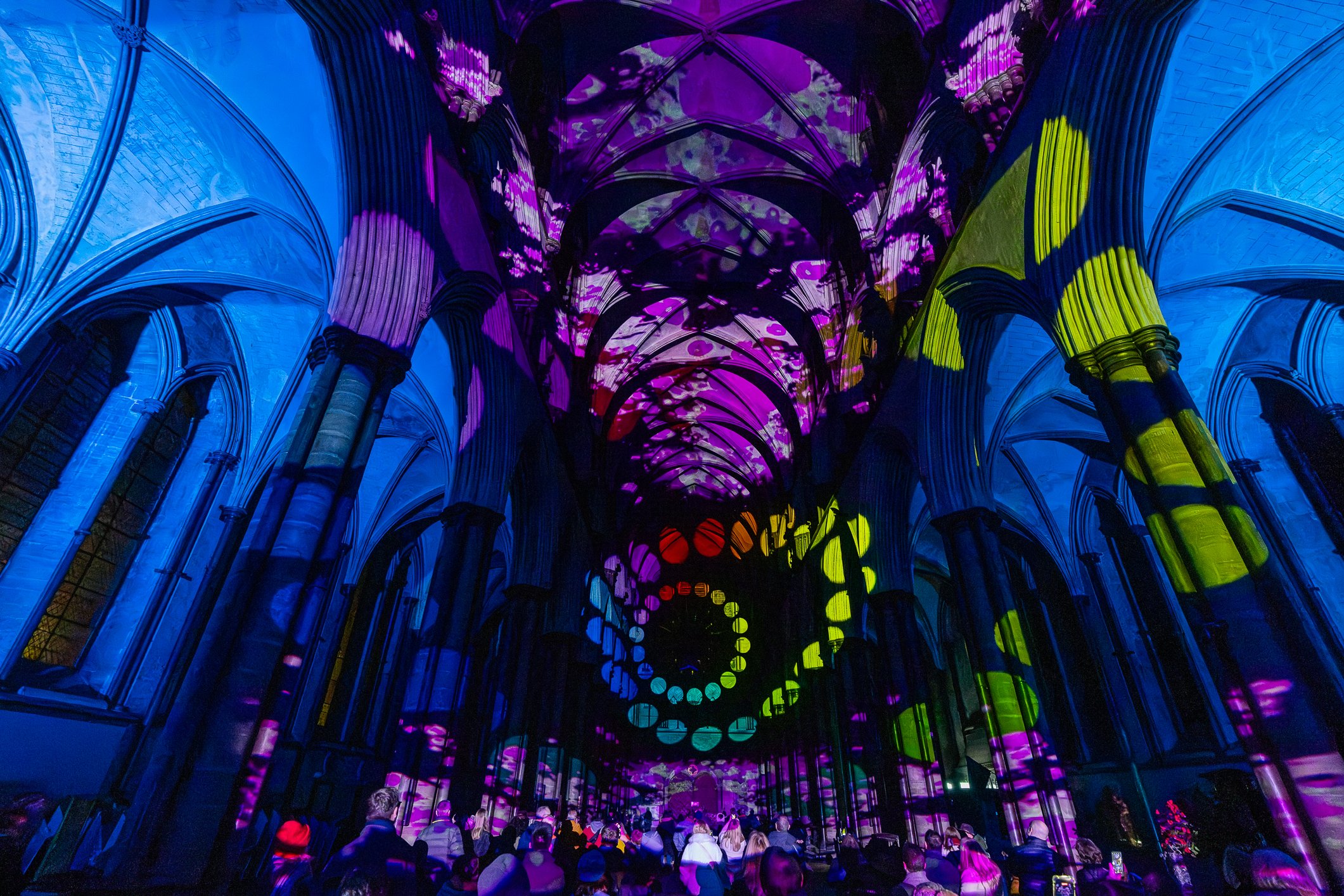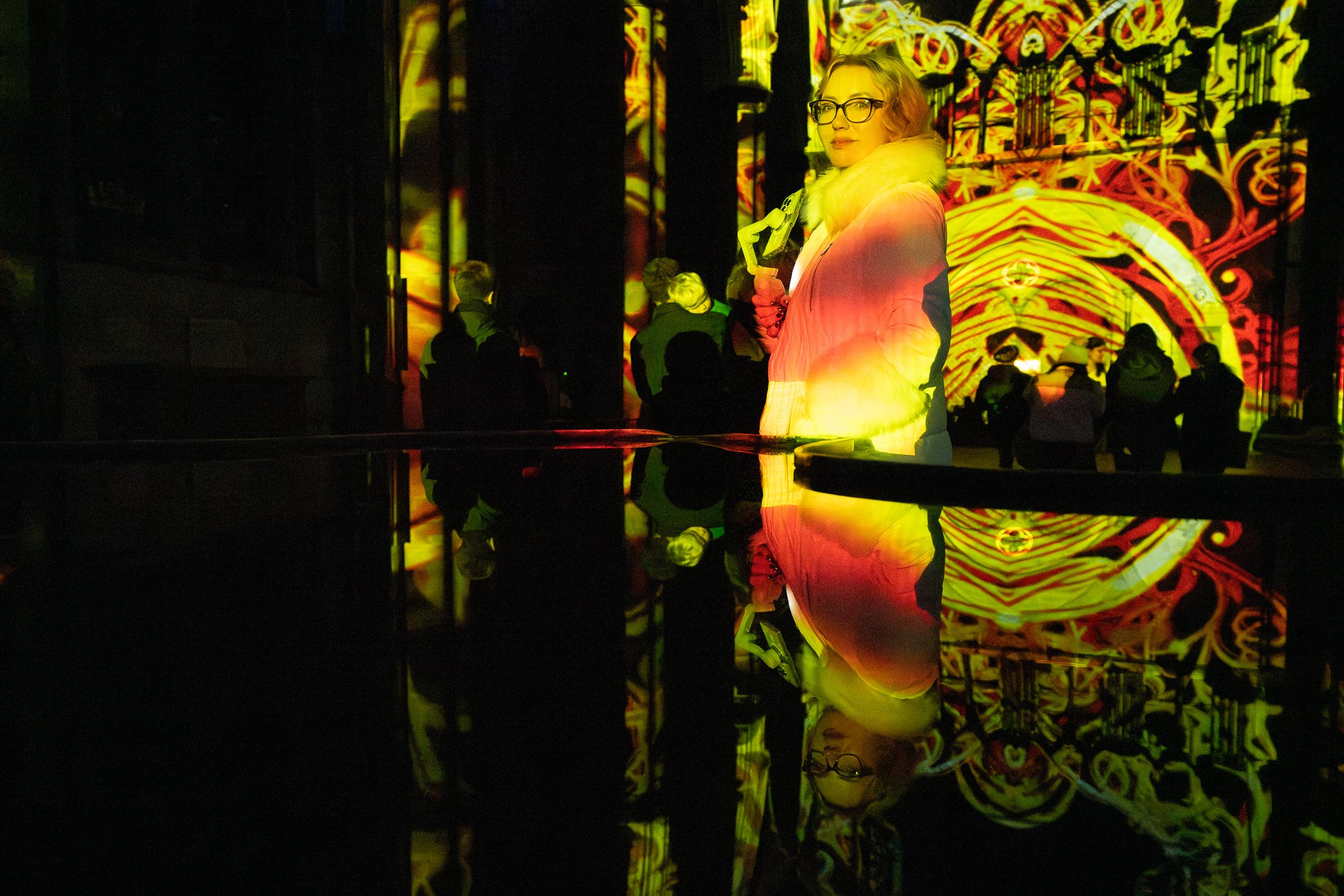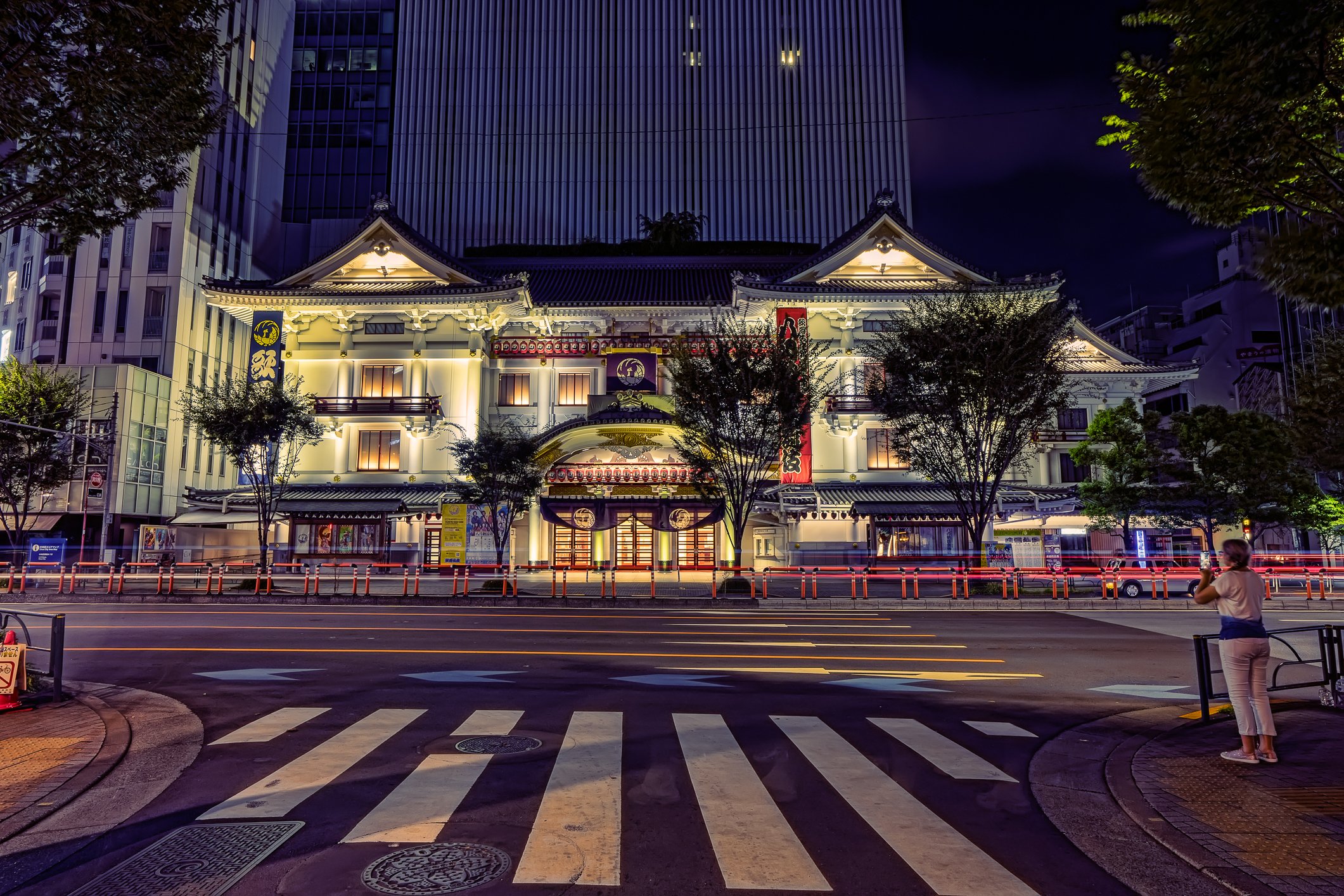This week, Salisbury Cathedral unveiled a new light and sound experience, elegantly crafted by Luxmuralis for the latest edition of Sarum Lights. This immersive event transformed the Cathedral into a canvas of light, filling both its west front exterior and many places in the interior with mesmerizing projection installations.
W tym tygodniu Katedra w Salisbury zaprezentowała nowy spektakl światła i dźwięku, zaprojektowany przez Luxmuralis na potrzeby najnowszej edycji festiwalu Sarum Lights. Katedra zamieniła się w płótno na którym światłem malowane były obrazy – projekcje obejmowały zachodnią fasadę, jak i wiele miejsc wewnątrz katedry.
Entitled Time, this year’s spectacle delved deep into humanity’s complex relationship with time—a theme that resonates through the ages. From the intricate workings of clocks to the vast expanses of history, science, and art, visitors embarked on an journey of exploration how time has shaped our lives, influenced great thinkers, and inspired artists throughout history.
Tegoroczny spektakl zatytułowany Czas zagłębił się w złożoną relację ludzkości z czasem — temat, który rezonuje przez wieki. Od skomplikowanych mechanizmów zegarów po rozległe obszary historii, nauki i sztuki, projekcje skłaniały do myślenia, jak czas kształtował nasze życie, wpływał na wielkich myślicieli i inspirował artystów na przestrzeni dziejów.
As guests wandered through the Cathedral, they were treated to stunning projections that illustrated the profound narrative of time, with evocative visuals and quotations from H.G. Wells’ The Time Machine.
This year extra addition was an interactive installation titled ‘A Note to Myself.’ It encouraged attendees to pen messages to their younger, current or future selves.
Kilka różnych projekcji ilustrowało narrację na temat czasu, z sugestywnymi wizualizacjami i cytatami z Wehikułu Czasu H.G. Wellsa.
W tym roku festiwalowi towarzyszyła dodatkowo interaktywna instalacja zatytułowana „Notatka do siebie”. Zachęcała ona uczestników do napisania wiadomości do młodszych, obecnych lub przyszłych wersji samego siebie.




















































